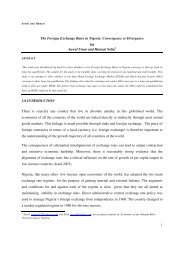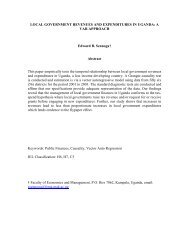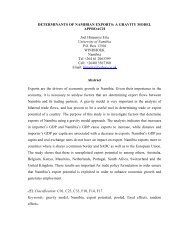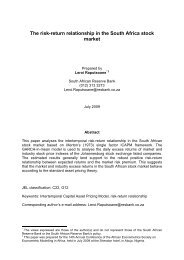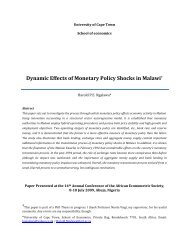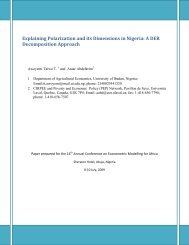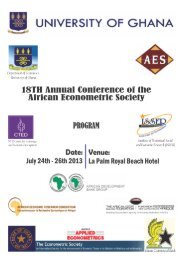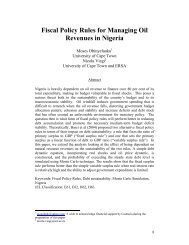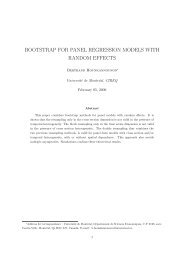An augmented capital asset pricing model
An augmented capital asset pricing model
An augmented capital asset pricing model
You also want an ePaper? Increase the reach of your titles
YUMPU automatically turns print PDFs into web optimized ePapers that Google loves.
i London. The London market is represented by the FTSE100 index. The constituent<br />
companies follow the code of corporate governance stipulated by the Cadbury Report and Sarbanes<br />
Oxley, which requires independent audit and timely reporting. They also have sophisticated investor<br />
relations and corporate communication mechanisms in place to ensure that information is incorporated<br />
into market prices. Owing to the significant fixed costs involved only the largest, best performing and<br />
most heavily <strong>capital</strong>ised companies can afford this trade off between the fixed costs incurred from<br />
adherence to a strict regime and the consequent significant decrease in costs of equity. This is<br />
reflected in the absolute size of the coefficients in the UK portfolio in Table 6. In contrast to the other<br />
emerging markets, all coefficients are significantly different from zero, including Jensen alpha, α p .<br />
However, the absolute sizes of these coefficients in relation to the other markets are much smaller.<br />
The ADJ R 2 indicates that the <strong>model</strong> containing all three factors that is, market, size and illiquidity<br />
premiums explains over 65% of the variance. However the sole presence of a significant Jensen alpha,<br />
α p indicates some degree of segmentation between the London market and Africa, which is expected.<br />
Given the London market is a global leader, the cost of equity is the lowest of this sample at -0.46%.<br />
The cost of equity is calculated from the annualized combination of the total risk premium, which is<br />
the sum of market, size and illiquidity premiums, and the risk free rate that is proxied by the UK<br />
Treasury rate. The low cost of equity indicates that companies in this market have access to much<br />
cheaper <strong>capital</strong> and this facilitates international operations and development projects. It also explains<br />
the recent migration to London of primary listings of major multinational enterprises such as <strong>An</strong>glo<br />
American and Old Mutual from South Africa given the cost of equity in their home market is 1.59%.<br />
ii South Africa. The market premium is the only variable with an estimated coefficient<br />
significantly different from zero. The size and illiquidity coefficients are both very small and<br />
statistically insignificant while the simple <strong>model</strong> including only the market premium has the highest<br />
ADJ R 2 term of 0.8594. The estimated coefficient on the market premium is large and significant and<br />
the ADJ R 2 is 0.859. This is partly due to the number of companies in this market (270), that is, half<br />
the total sample. As reported in Table 5, the cost of equity is 1.59%, which is the lowest in the<br />
African sample and equivalent to that in London. However, unlike the London market there is a lack<br />
of a significant Jensen alpha, α p , which implies there is less segmentation between South Africa and<br />
the other African markets. Thus, this market provides a location for raising project finance for the<br />
other African markets.<br />
iii Egypt. All three variables are significantly different from zero in this market and have some<br />
the largest coefficients in absolute terms. However, the ADJ R 2 is small (0.3089). As reported in<br />
Table 5, the cost of equity for this market is 15.23%, the highest in North Africa and second to Kenya<br />
in this sample. This would place Egyptian companies with motivation for international projects and



